Since we must work from anywhere, no matter where we park, one of the first questions we asked when preparing for our trip north was: “Will our satellite internet dish work in Alaska?” The short answer, is yes.
tldr; Satellite Internet service from Mobile Satellite Technologies keeps these RVers online way up north in the Yukon and Alaska, with various factors that must be considered to ensure a stable connection.
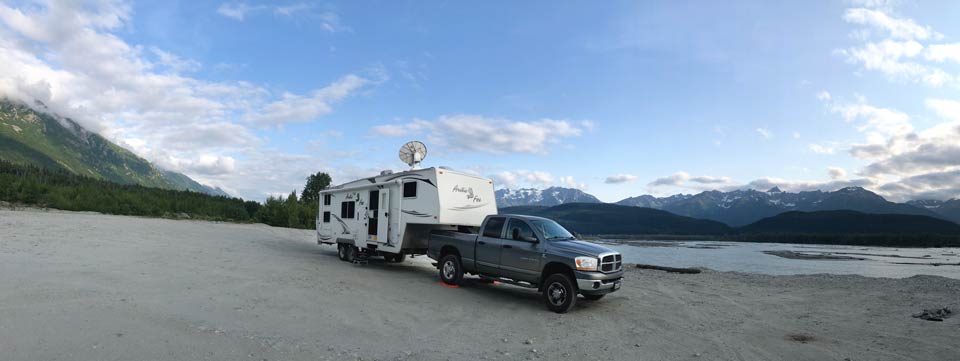
Can RVers Get online in Alaska with Satellite Internet?
Long before heading north, we called MobilSat to ensure the network coverage for our RVDataSat 840 was suitable for keeping us online whenever we were were out of cellular network range–which is quite often throughout the Yukon and southern Alaska. We knew we would be relying heavily upon the dish, and various challenges to working online while RVing to Alaska has proven us right. But I digress, yet again…
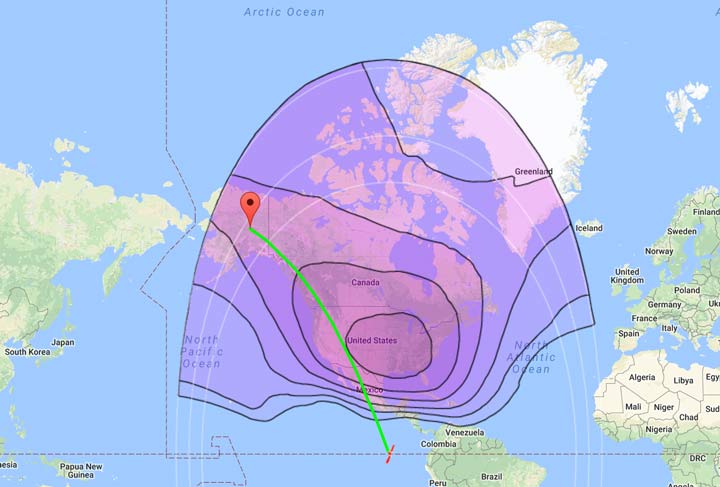
At first glance, the North American satellite signal footprint for 95 West looked promising. And yes, we have been able to work effectively throughout this journey. But certain considerations should be known before expecting to truly get on anywhere via satellite internet.
How Terrain Affects Mobile Satellite Internet Service
One comes to appreciate that whole curvature of the earth thing when RVing north of 60º. While our travels have offered the mobile Live Work Dream headquarters some most spectacular office views, we have often had to keep those visits short before moving on to another location with greater exposure to the southern horizon.
In short, the farther north we travel, the lower on the horizon our satellite appears in the sky–and hence the farther down our dish points closer to the ground. After changing our route to visit Skagway, being surrounded by mountains in the southeastern coastal ranges of Alaska often made it difficult to find those perfect spots where we could stay a while.
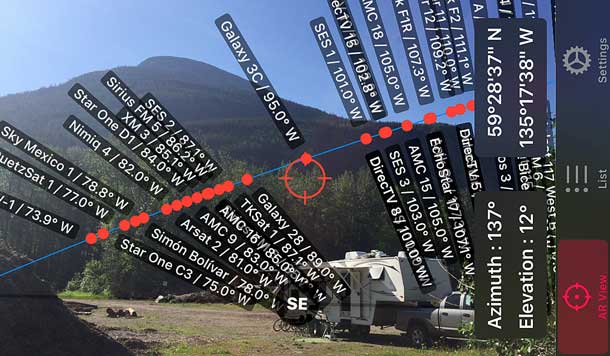
With the help of the Satellite Pointer app for iOS (also available for Android), at a glance I am able to quickly determine if we will be able to get online at any given location. These days I’ve learned to glance much more frequently, before we set up camp.
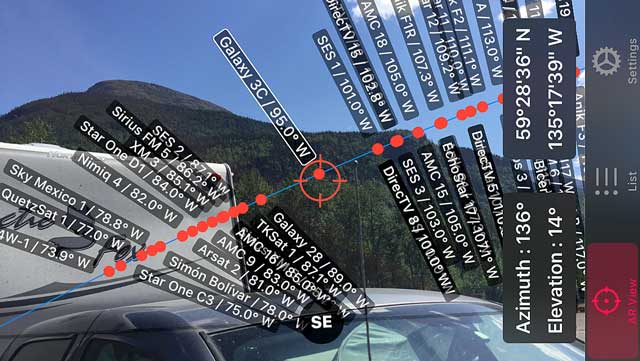
Sometimes, moving the rig a short distance is just enough to get a clear shot at our satellite. At least that has worked for us in the lower 48 states, but not so much up north. It’s days like these where we must move on, to find more open skies, or be forced back into the world of RV parks with decent cellular service.

In Skagway, that meant moving to the harbor, which offered better cellular service–until all the tourists got off the cruise ships. A good thing, considering the mountain to our immediate south which continued to block our satellite signal. Moving on, however, has also placed us in some of our most favorite stops yet!
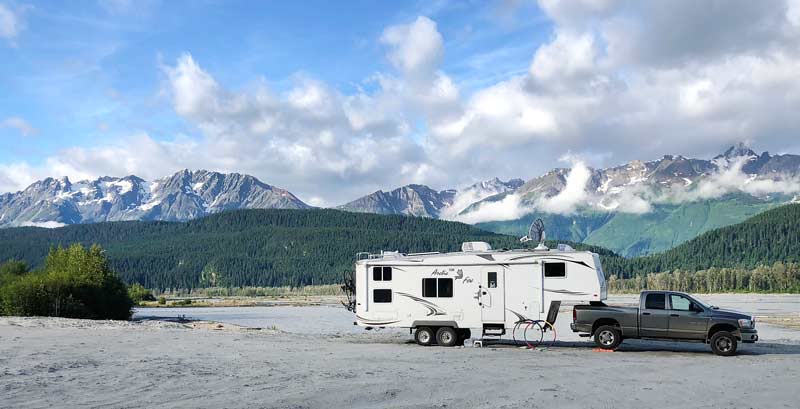
Our free boondocking spot on the banks of the Chilkat River will be one of my most memorable from this entire trip, at least so far. Primarily because it offered excellent exposure for quick and easy internet access–not to mention the view!
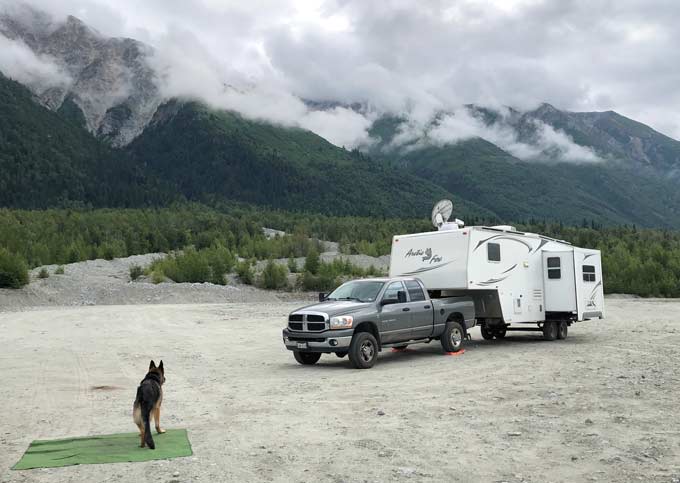
We might have stayed longer, if not for the rafting outfitters pulling there boats out right behind our rig every day. There’s no escaping the tourists in these tiny towns that make all their money a few months out of the years. Did someone just digress again?
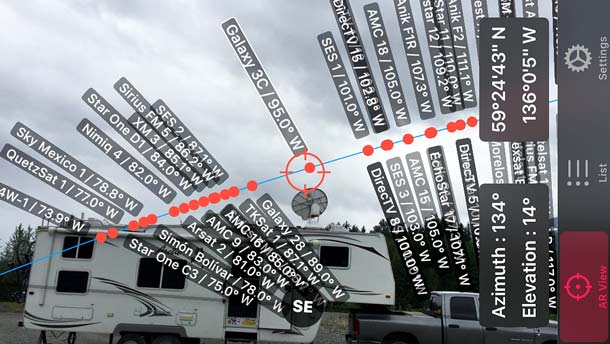
Suffice it to say, terrain matters. As long as we have enough southern horizon, we have no problem getting online anywhere. I even know of at least one RVDataSat user who has put his system to the test at the Arctic circle–where there is plenty of horizon all around. We’re saving that trip for a much more suitable rig, when we don’t need to be online all the time!
How exactly does that satellite elevation thing work?
Since others have asked…contrary to how some believe it is the arm of the antenna assembly that points to your assigned satellite, it is the direction of the reflector that matters most.
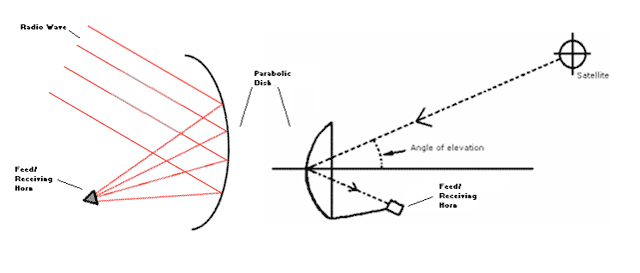
To Simplify: When aligned properly, the parabolic antenna—or reflector, aka: the “dish”—receives radio waves from your assigned satellite and reflects the signal, focusing it upon the receiving horn at the end of the assembly arm where the LNB is attached. That “Low Noise Block” device is attached in the front of a satellite dish to receive a very low level microwave signal transmitted from the satellite. The LNB amplifies the signal, modifying it to a lower frequency band sent through the cable to an indoor receiver. When transmitting data from your satellite modem, the system works in reverse, with the horn bouncing your signal off the dish back up to the satellite.
But enough geekspeak…though the position of the arm does not dictate the direction of your satellite, it is important to consider if you will traveling to far northern (or southern) extremes prior to installing your dish.
Why Dish Installation Location on Your RV Roof is Important!
Choose your rooftop location carefully when installing the RVDataSat 840–or any satellite dish–on top of your RV. Ample clearance allowing the dish (and attached arm) to swing 360º is required to ensure there are no obstructions. When performing a dish calibration, the dish elevation will tilt all the way back with the reflector nearly pointing straight up.
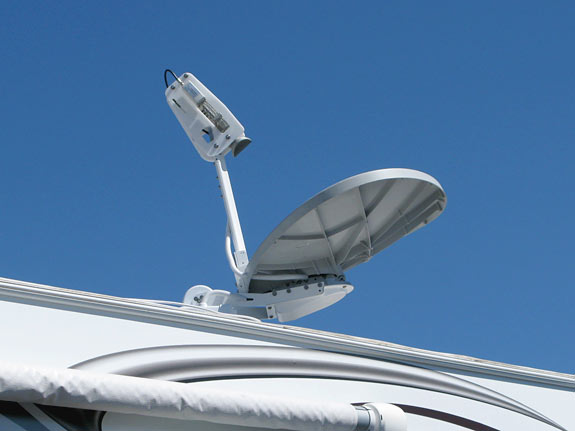
We ensured the MaxxAir vent cover over our bedroom fan was not in the way when installing our system. Even after using our previous MotoSat satellite dish in Maine years ago–and noticing how low the LNB was pointed–we never expected the swing of the arm would ever be an issue. Then we decided to travel north of 60º.
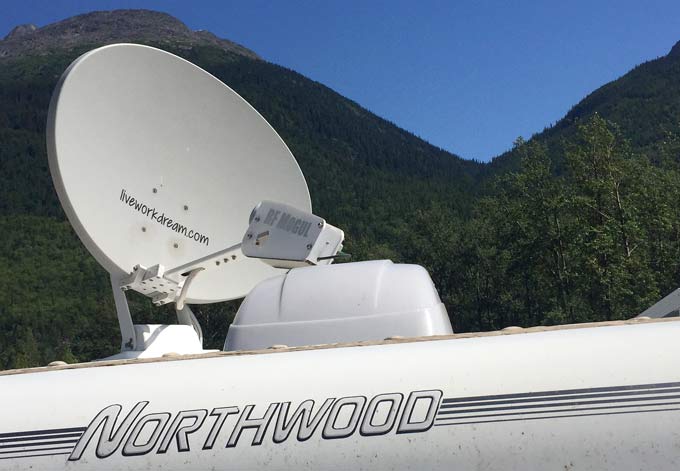
Up north here, I make it a point to go outside and watch our antenna spin every time I perform a search or stow the dish. The first time I noticed the horn assembly rub across the top of our vent, was when standing on the side of the highway trying to lock on during our Alcan roadside emergency. Accessing the controller with my iPhone from the middle of the road, I stopped the azimuth rotation just in time to prevent potential damage when a kind motorist stopped to inquire if we needed assistance.
Single Strength Matters
After quickly locking on to 95W at another favorite spot a bit further south in British Columbia, I was disappointed when I saw we had no network lock.
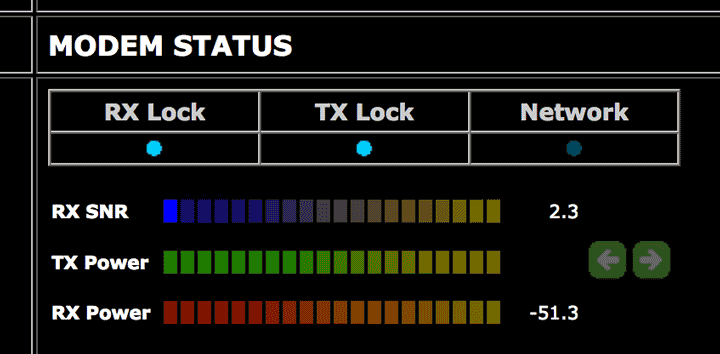
I then noticed the very low Receive Power and Signal to Noise Ratio (SNR) and determined the satellite must have been peeking just over the top of the mountain near where we were parked. By raising our fifth wheel landing jacks just a couple inches, and re-peaking on the satellite, we acquired a network lock with Receive SNR of 9.5±. And inch or so here, can mean miles way up there, so yes, even the smallest position adjustment can often make a huge difference.
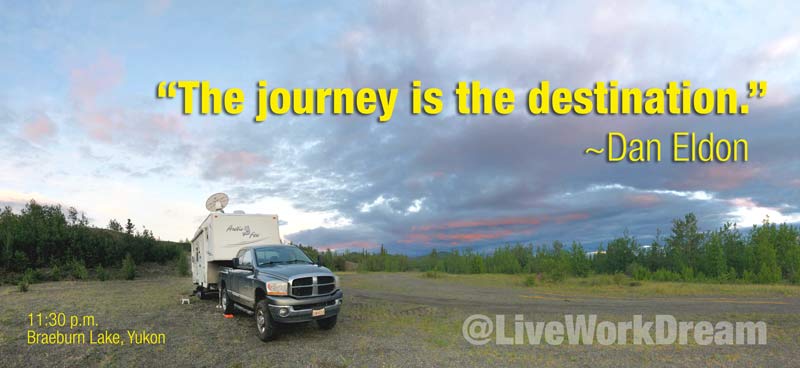
I could apparently go on and on. The gist of it is, for anyone still interested–yes, satellite internet works in Alaska. Without it, we would not be able to enjoy the lifestyle we do…
I bought a dish tailgater about 2-3 yrs ago. After installation problems & many calls, I finally was told it only worked in Continental US!
(Too bad, as they were offering an add-on service for $7 p/mo.)
While both mts. & low angle in the sky are a challenge in Alaska, I had hoped to use them for RV, cabins & boat.
The other place I want to use it is in Hawai’i (also NOT Continental US.)
Any word on update or experiences in 2023? It would be such a great solution. Thank you
We’ve never used a Tailgator or had dish service, so I have no idea.
I’m looking at property in remote Dillingham county Alaska and wondered if you thought your system would work for me?
If you have wide open southern sky access, satellite internet should work. But I don’t know where Dillingham county is. You are better off getting your questions answered directly by MobilSat.
Paula, If you don’t already know, Verizon service reference below here, while acceptable “Outside,” offers very poor service in Alaska. ATT has proven to be the most reliable over the years without doubt. Some places in Rural AK only use GCI (while weak in Anchorage), but that continues to change as the markets do.
Dillingham in SW AK is wonderful, “Assistuq!”
Awesome info… may I ask what plan you signed up for?
Sure! IF we were not grandfathered into our original InstaSat pay as you go option that is no longer available, we would likely opt in for the Access 300 to take advantage of the better speeds–and degrade our Verizon plan to compensate for the expense. Thanks for aksing.